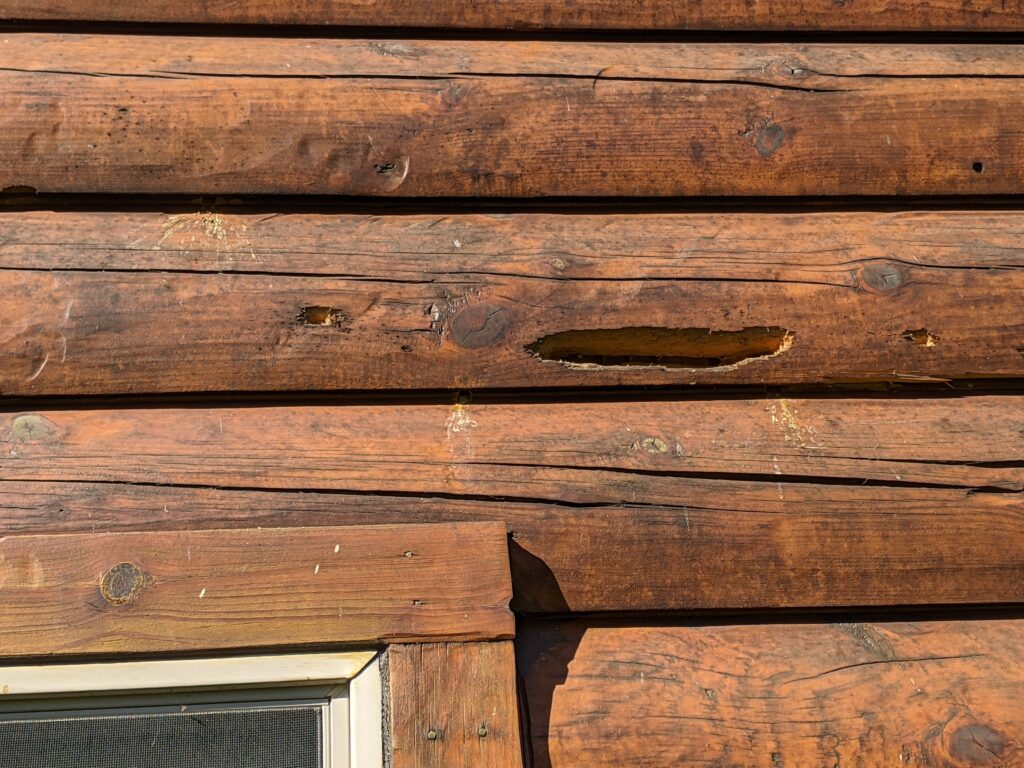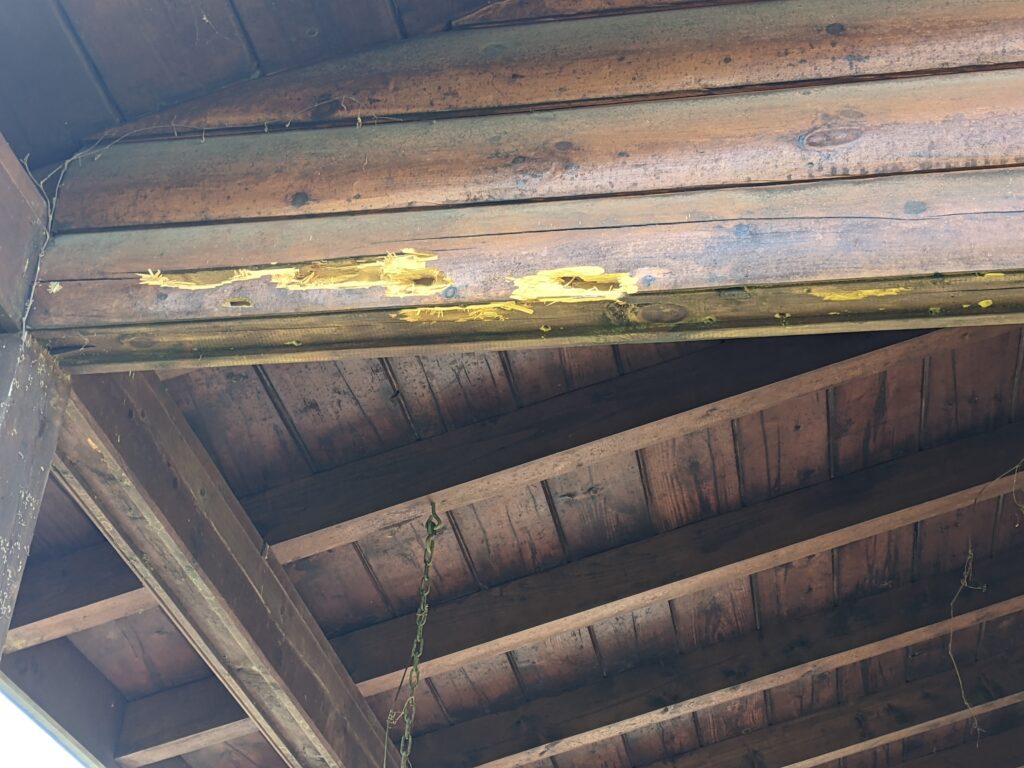Carpenter Bee Treatment

Carpenter Bee Treatment
Carpenter bees are a persistent challenge for log home owners, often causing extensive damage if left untreated. Many homeowners are unfamiliar with these wood-boring insects and may even feel intimidated by their presence. Unlike termites, carpenter bees do not consume wood; instead, they drill into logs, fascia boards, eaves, decks, and other unpainted wood surfaces to create nesting tunnels. These bees are found throughout the United States, with western species favoring oak, eucalyptus, and redwood, while eastern species prefer pine, fir, cedar, and redwood—making log homes a prime target for infestation, especially if the wood is unpainted or weathered.
The most common sign of carpenter bee activity is the round, smooth holes they bore into wooden surfaces. These bees overwinter inside abandoned tunnels and emerge in early spring, typically in April or May, when females begin excavating new tunnels or expanding existing ones. Unlike other wood-damaging pests, carpenter bees are social insects that often share nesting tunnels, leading to a cycle of reinfestation. Over time, these tunnels can extend up to ten feet, with multiple generations expanding and interconnecting their nests, causing significant structural damage. If left unchecked, this ongoing re-infestation can severely compromise the integrity of a log home.
How We Treat the Issue
To effectively treat an active carpenter bee infestation, we use a direct carpenter bee treatment by applying professional-grade contact insecticide into the entrance of the nesting tunnels. This treatment provides excellent residual protection and a rapid knock-down effect, significantly reducing the bee population. The insecticide is applied using a specialized bellows duster, which allows for optimal dust coverage inside the tunnel while minimizing disturbance to nesting females. After the initial carpenter bees treatment, the tunnel is left open for approximately two weeks to ensure that returning bees come into contact with the insecticide, effectively eliminating the colony. Once this waiting period has passed, the tunnel must be sealed to prevent further infestations.


Keeping the Bees at Bay
While treating existing nests is crucial, long-term prevention is key to carpenter bee removal and controlling carpenter bee damage. One effective method is incorporating a contact insecticide into the final coat of stain or acrylic topcoat when re-staining or re-coating the home. This preventative measure creates a protective barrier that deters carpenter bees from drilling new tunnels, helping to remove carpenter bees and safeguard your log home from future infestations. Additionally, regular maintenance and inspections can identify early signs of bee activity, allowing for prompt treatment before extensive damage occurs.
Ready to get started?
If you’ve noticed carpenter bee activity around your home or suspect an infestation, don’t wait until the damage becomes severe. Our expert team offers targeted carpenter bee treatment services, ensuring your log home remains protected from these destructive pests. Contact us today to schedule an inspection and implement a long-term solution to keep your home safe and sound.

